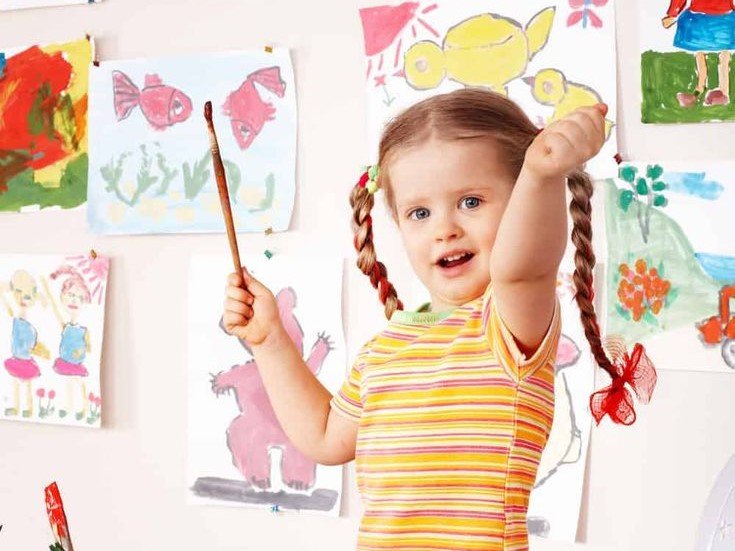Creativity is one of the most valuable skills your child can develop, offering them the ability to think outside the box, solve problems, and express themselves. As parents, it’s essential to provide opportunities for creative expression from a young age. Encouraging creativity doesn’t require a lot of time or expensive materials; instead, it’s about offering a variety of engaging activities that inspire imagination and experimentation. Here are seven fun, age-appropriate activities designed to nurture your child’s creativity.
1. Sensory Play for Infants (0-2 years)
Infants and toddlers learn best through their senses. Sensory play not only stimulates their brain development but also encourages creativity. Simple activities such as playing with textured toys, finger painting with non-toxic colors, or exploring different materials like fabric, sand, or water can all promote imaginative play.
- Activity Idea: Create a sensory bin filled with soft items like cotton balls, colorful ribbons, or water beads. Let your child explore and interact with different textures and colors, helping them discover the world around them in a fun and creative way.
2. Drawing and Scribbling for Toddlers (2-4 years)
At this age, children are developing their fine motor skills and learning how to express themselves through drawings and scribbles. Don’t worry if their pictures don’t make sense to you—these early creations are a fundamental part of the creative process and a precursor to later art skills.
- Activity Idea: Set up a drawing station with crayons, markers, and paper, and encourage your toddler to draw freely. Provide a variety of colors and simple prompts (like drawing a sun or a tree) to spark their imagination. The goal is to let them explore their own ideas without restrictions.
3. Playdough Creations for Preschoolers (3-5 years)
Playdough is a wonderful tool for sparking creativity in preschool-aged children. It helps develop their fine motor skills, hand-eye coordination, and imaginative thinking. Whether they are rolling, flattening, or shaping the dough, this activity encourages open-ended creativity.
- Activity Idea: Provide your preschooler with playdough in multiple colors and a variety of simple tools like plastic cookie cutters, rolling pins, or plastic knives. Challenge them to create their favorite animals, buildings, or imaginary creatures. You can also use this activity to introduce basic concepts like shapes and patterns.
4. Storytelling and Role Play for Early Elementary (5-7 years)
As children grow older, their language and communication skills develop, allowing them to create more complex stories and engage in imaginative role-play. Storytelling and role play are great ways to encourage creativity, as they allow children to use their imagination to invent characters, plotlines, and settings.
- Activity Idea: Organize a “dress-up” day where your child can pretend to be a superhero, astronaut, or a favorite character. You can also create a story together where each of you takes turns contributing to the plot. Encourage your child to act out different scenes, use props, or make up their own dialogue.
5. Building and Crafting for Tweens (8-12 years)
By the time your child reaches the tween years, they can handle more intricate activities that require problem-solving and planning. Crafting and building projects are perfect for fostering creativity during this stage. These activities allow your child to create something tangible while using their imagination to personalize it.
- Activity Idea: Introduce your tween to basic DIY projects like building a birdhouse, creating a scrapbook, or constructing a model from clay or wood. You can also involve them in creative cooking, such as decorating cookies or making their own pizza designs. These projects not only nurture creativity but also teach patience and attention to detail.
6. Photography and Digital Art for Teens (13+ years)
As your child enters their teenage years, their creative pursuits often evolve, and they may develop a passion for photography or digital art. These activities allow them to express themselves visually while honing technical skills that can be valuable later in life. Encouraging their interest in these arts provides an opportunity for both self-expression and technical growth.
- Activity Idea: Give your teen a simple digital camera or smartphone and set up a creative photography challenge. Ask them to capture images that represent different emotions or tell a story. You can also introduce digital design software like Canva or Adobe Spark, allowing them to explore photo editing, graphic design, or digital illustrations.
7. Collaborative Creative Projects for the Whole Family
Sometimes the most creative projects are the ones that bring everyone together. Collaborative activities allow kids of all ages to work with parents or siblings to bring an idea to life. These projects not only nurture creativity but also build communication, teamwork, and problem-solving skills.
- Activity Idea: Plan a family art day where each person contributes to a larger project. For example, you could create a mural on a large sheet of paper, work together to build a cardboard fort, or write and perform a short play. The key is to encourage everyone to contribute their unique ideas and skills, making it a true family effort.

Conclusion
Creativity is a crucial part of your child’s development, and there are countless ways to encourage it at every stage of their growth. Whether they’re exploring sensory materials as infants, telling stories as preschoolers, or using digital tools as teens, creative activities provide valuable opportunities for self-expression and problem-solving. By offering a variety of fun and engaging activities, you can help your child develop a love for creativity that will last a lifetime.

